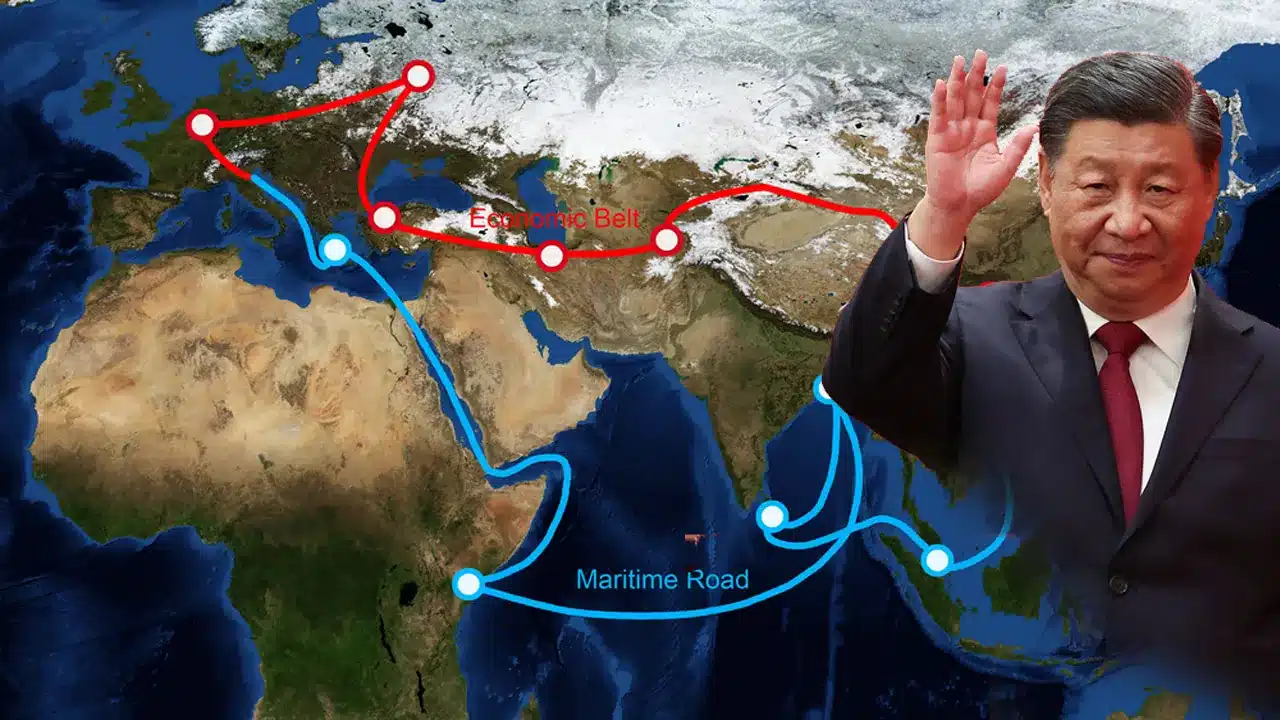How the Belt and Road Initiative is Transforming Global Trade and Connectivity : 2024

Explore the Belt and Road Initiative (BRI), China’s ambitious project aimed at enhancing global trade, investment, and connectivity. Learn about its objectives, global impact, and future challenges.
The Belt and Road Initiative (BRI), introduced by China in 2013, is one of the most ambitious infrastructure and economic development projects in modern history. With the goal of enhancing trade, investment, and connectivity across Asia, Europe, and Africa, the BRI has garnered global attention. As the initiative continues to evolve, it has become a central pillar of China’s foreign policy and a key driver of global economic integration.
What is the Belt and Road Initiative?
The BRI consists of two main components: the Silk Road Economic Belt and the 21st Century Maritime Silk Road. The Silk Road Economic Belt is a land-based route that aims to connect China to Europe through Central Asia, while the Maritime Silk Road is a sea-based route linking China to Southeast Asia, South Asia, Africa, and Europe. Together, these routes form a vast network of railways, highways, ports, and pipelines designed to facilitate trade and investment.
US Prepares for Potential Military Confrontation with China, Shifting Resources from Europe to Asia
Key Objectives of the BRI
Infrastructure Development: One of the primary goals of the BRI is to build and upgrade infrastructure across participating countries. This includes the construction of roads, bridges, railways, ports, and energy pipelines. By improving infrastructure, the BRI aims to reduce transportation costs, enhance trade efficiency, and promote economic growth in developing regions.
Economic Growth and Trade: The BRI seeks to create new trade routes and economic corridors, opening up markets and opportunities for businesses. By enhancing connectivity between Asia, Europe, and Africa, the initiative is expected to boost trade, attract investment, and stimulate economic growth in participating countries.
XML Bottle Cleaning Brush Silicone Long Handle for Baby Bottle, Water Bottle, Containers
Cultural Exchange and People-to-People Ties: Beyond economic goals, the BRI also aims to foster cultural exchange and strengthen people-to-people ties. Through initiatives such as educational exchanges, tourism, and cultural programs, the BRI promotes mutual understanding and cooperation among different cultures.
Energy Security: The BRI plays a significant role in ensuring energy security for China and participating countries. By developing energy infrastructure, such as pipelines and power plants, the initiative helps diversify energy sources and reduce dependence on a single supplier.
Global Impact of the BRI
The BRI has had a profound impact on the global economy and geopolitics. By investing in infrastructure and fostering economic cooperation, the initiative has strengthened China’s influence in participating countries. However, the BRI has also faced criticism and challenges.
Lint Remover for Clothes | Electric Fabric Lint Shaver for Sweater
Economic Opportunities and Risks
For many developing countries, the BRI offers an opportunity to access much-needed infrastructure investment and boost economic growth. However, there are concerns about the sustainability of debt incurred through BRI projects. Some countries have found themselves in debt distress, leading to fears of “debt-trap diplomacy,” where China could gain political leverage over indebted nations.
Environmental and Social Concerns
The scale of BRI projects has raised environmental and social concerns. Large-scale infrastructure projects can lead to environmental degradation, displacement of communities, and loss of biodiversity. Ensuring that BRI projects are sustainable and socially responsible is crucial for the long-term success of the initiative.
Geopolitical Implications
The BRI has significant geopolitical implications, as it extends China’s influence across Asia, Europe, and Africa. Some countries, particularly in the West, view the initiative as a strategic move by China to expand its global power. The BRI has led to increased competition among major powers, particularly the United States, which has launched its own infrastructure initiatives to counter China’s growing influence.
The Future of the BRI
As the BRI continues to evolve, its success will depend on several factors, including the ability to address economic, environmental, and social challenges. The initiative’s long-term impact on global trade and geopolitics remains uncertain, but it is clear that the BRI will continue to be a key driver of global economic integration.
China Inc.: Between State Capitalism and Economic Statecraft
The Belt and Road Initiative represents both opportunities and challenges for participating countries and the global community. As the world navigates the complexities of this ambitious project, the BRI will undoubtedly shape the future of global trade, investment, and geopolitical relations.






SLOT GACOR HARI INI